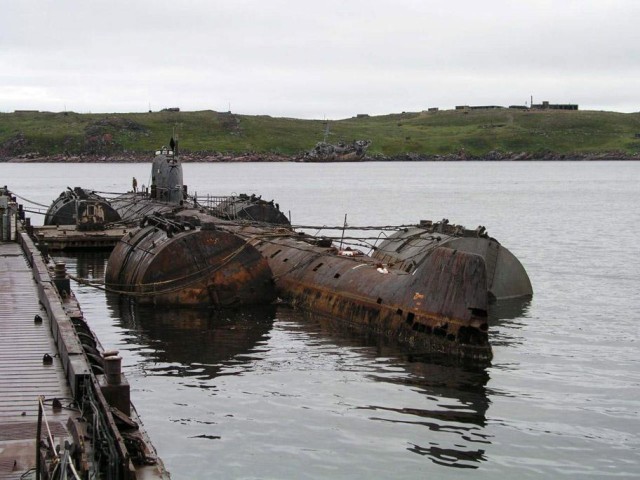
The system built to manage Russia’s nuclear legacy is crumbling, our new report shows
Our op-ed originally appeared in The Moscow Times. For more than three decades, Russia has been burdened with the remains of the Soviet ...
News
Publish date: October 23, 1997
Written by: Igor Kudrik
News
According to the official returns from the Technical Department of the Russian Navy in Moscow, dry dock SD-10 has been taken out of operation. During World War 2 this dock was blasted into the mountain from the seaward side in Gremikha. It was later rebuilt to accommodate refuelling activities of Project 705 – Alfa class submarines with liquid metal cooled reactors.
In 1995 the dry dock started to leak water inside. Several attempts to repair the facility failed. At last the Navy had to take the dock officially out of operation in 1997. The cost to repair the dock amounts to 5,5 million USD, which has not been provided so far. The situation is aggravated by the fact that the repairs can be conducted only 4 months a year due to the severe climate in the area.
There were seven submarines of Alfa class built in the Soviet Union. All of them are currently taken out of operation. In addition, one submarine of November class was outfitted with two liquid metal reactors. This submarine was dumped in the shallow waters on the eastern side of Novaya Zemlya. Two reactor cores from this submarine are also stored in Gremikha.
All in all, there are 6 liquid metal reactor cores in Gremikha’s storage facility. Two submarines of Alfa class and one reactor compartment (located in Saida-guba on the Kola Peninsula) still have fuel inside the reactors. These three objects were to be defuelled, although this operation now is postponed for an unspecified period of time.

Our op-ed originally appeared in The Moscow Times. For more than three decades, Russia has been burdened with the remains of the Soviet ...

The United Nation’s COP30 global climate negotiations in Belém, Brazil ended this weekend with a watered-down resolution that failed to halt deforest...

For more than a week now — beginning September 23 — the Zaporizhzhia Nuclear Power Plant (ZNPP) has remained disconnected from Ukraine’s national pow...

Bellona has taken part in preparing the The World Nuclear Industry Status Report 2025 and will participate in the report’s global launch in Rome on September 22nd.